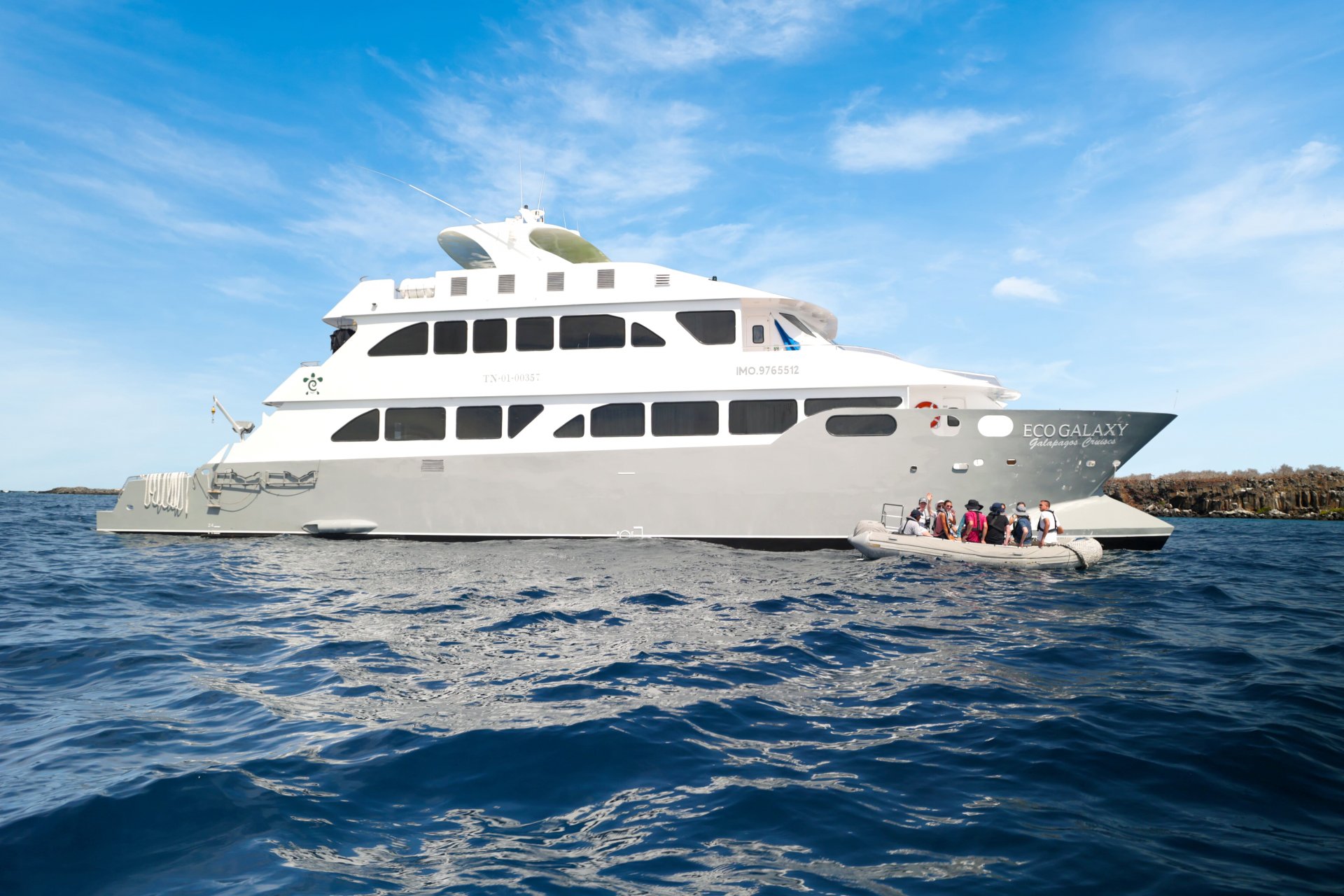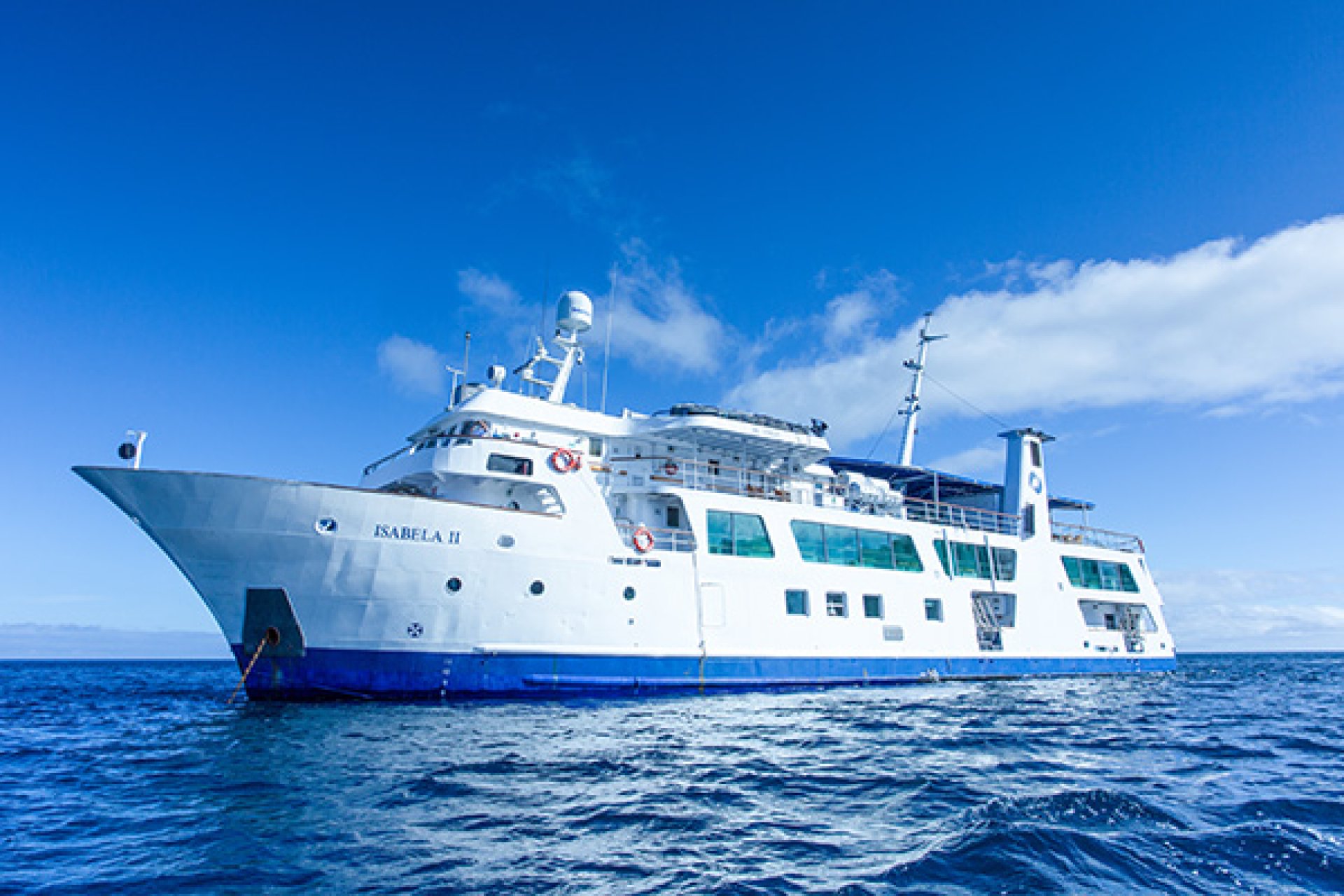Amazonic Holistic | Gaia Amazon
Canoe tour on the river and monkey watching, handmade chocolate, hike in the primary forest, Anaconda Island, visit to an indigenous family, animal rescue center.

Canoe tour on the river and monkey watching, handmade chocolate, hike in the primary forest, Anaconda Island, visit to an indigenous family, animal rescue center.

Explore the “Enchanted Islands” aboard the M/C EcoGalaxy a first class catamaran, built to navigate the Galápagos Islands preserving its fragile ecosystem, and of course its natural beauty.

Hermes Mega Catamaran is the first ultra-luxury cruise to sail through the Galápagos Islands. With a maximum capacity of 20 guests, Hermes offers an unparalleled experience through exclusivity, top-tier amenities, and an almost 1-to-1 crew-to-guest ratio.

Discover the unique wildlife of the Galápagos Islands aboard the luxurious Isabela II yacht. Immerse yourself in crystal clear waters and admire the natural beauty of these magical islands.

This trip proposal is perfect for those who wish to explore the emblematic places of the Galápagos Islands in a short period of time.

Immerse yourself in the heart of the Amazon and discover a world where adventure and culture are intertwined in every experience. At the Napo Cultural Center, we offer a variety of tours that will allow you to get to know the jungle in an authentic and close way.
The Cotopaxi volcano, with its majestic snow-capped peak and almost perfect cone shape, stands as an emblem of the Ecuadorian Andes and one of the main tourist attractions in the country. This active volcano, located in the heart of Ecuador, is not only a natural jewel that attracts adventurers from around the world but also a cultural and historical icon deeply rooted in the identity of Ecuadorians. If you are planning a visit to Ecuador, Cotopaxi should be on your list of must-see places. But what makes it so special? Below, we will tell you everything you need to know to make your visit unforgettable.
Why is Cotopaxi an Icon of the Andes?
Cotopaxi is not just a volcano; it is a symbol of the beauty and power of Andean nature. With an altitude of 5,897 meters, it is the second highest volcano in Ecuador and one of the most active in the world. However, what makes it an icon is not only its height or volcanic activity but the way its snow-capped summit shines under the Andean sky. Since pre-Columbian times, Cotopaxi has been considered sacred by local indigenous cultures, who revered it as the dwelling place of the gods. Even today, its figure inspires respect and admiration, symbolizing the connection between man and nature.
Historically, Cotopaxi has played a crucial role in the lives of the communities that inhabit its surroundings. During the Inca era, the volcano was believed to be a place of worship where ceremonies were held to appease the gods and ensure the fertility of the lands. With the arrival of Spanish conquerors in the 16th century, Cotopaxi also became a strategic landmark, and its imposing presence has been documented by explorers and scientists throughout the centuries. In the 19th century, the famous German geographer and explorer Alexander von Humboldt was one of the first to study its geography and volcanic activity, thus contributing to its international recognition. Today, Cotopaxi attracts not only mountaineers and adventurers but also symbolizes Ecuador's rich cultural and natural heritage, reminding us of the importance of preserving our natural environments and the traditions that surround them.
A Draw for Adventurers
Cotopaxi is a mecca for mountaineering and trekking enthusiasts. Its ascent is a challenge that attracts experienced climbers, and reaching the summit is an epic achievement that rewards with stunning views of the Andean highlands. However, you don't need to be an expert in mountaineering to enjoy Cotopaxi. Cotopaxi National Park offers hiking trails for all levels, and it is common for visitors to enjoy walks along its slopes, surrounded by wildlife such as llamas, deer, and condors.
Unique Ecosystem
The biodiversity on the slopes of Cotopaxi is another of its great attractions. As you ascend, you will notice how the landscape changes dramatically. From the lush grasslands of the páramos, home to a wide variety of species, to the cold and desolate area near the summit, every step is a new experience. Among the animals you can observe are the páramo wolf, the spectacled bear, and the majestic Andean condor, a symbol of freedom and the spirit of the Andes.
Regarding flora, the ecosystem hosts diverse species that have adapted to the extreme altitude conditions. Some of the most representative plants include:
The fauna is also rich and diverse, with a mix of endemic and migratory species. In addition to the aforementioned páramo wolf and spectacled bear, you can find:
Culture
The culture in Cotopaxi is deeply rooted in its geography and the symbolism of the volcano. Cotopaxi, which in Quichua means "neck of the moon," has been an object of veneration and fascination throughout the centuries. Here are some key aspects of its cultural influence:
How to Get There and What to Expect
Cotopaxi is located on the Eastern Cordillera (Real), about 35 km northeast of Latacunga, 45 km southeast of Quito, and 70 km northwest of Tena, making it a perfect day trip or weekend getaway. Entrance to Cotopaxi National Park is free, although it is advisable to hire local guides to accompany you on hikes or ascents. If you decide to climb the volcano, keep in mind that you will need a special permit and appropriate gear for extreme cold and terrain conditions.
For those who prefer a more relaxed experience, there are several haciendas and lodges in the surrounding area that offer comfortable accommodations, traditional Ecuadorian food, and unparalleled views of the volcano. Many of these establishments also offer activities such as horseback riding, mountain biking, and guided tours to explore the local flora and fauna.
Tips for Your Visit
The Cotopaxi volcano, with its majestic snow-capped peak and almost perfect cone shape, stands as an emblem of the Ecuadorian Andes and one of the main tourist attractions in the country.